|
|
Nature in Damme Geologically, Damme can be divided into two areas: the polders in the north and the sandy area in the south (around Sijsele). Both areas have a different bio-diversity. In the polders you can find creeks and low, wet grounds while in the higher, sandy region you will find a drier soil. In the southern area you will discover the only wood in Damme, while the north is mainly known for its canals and waterbirds. Damme has a lot to offer for the nature lover. An overview below: |
|
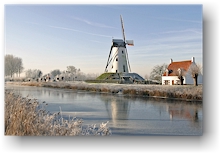 Damse
Vaart Damse
VaartThis canal between Bruges and Sluis was dug on command of Napoleon and is now one of the most famous spots in the region. It's an almost obligatory part in a refreshing bicycle ride or walking-tour. It's also a favourite spot for numerous waterbirds. The canal is bordered by poplar trees, amongst which are the typical crooked Marilandicas [more info] |
||
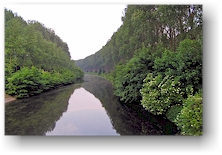 Leopoldcanal LeopoldcanalThis waterway is of vital importance, serving as draining canal for all the surrounding polders. It was dug in 1845 from Boekhoute to Heist where it pours in the North Sea. The perfectly lined-out rows of poplar trees form a kind of natural cathedral of trees. The vegetation on the shores forms the perfect base for an ambush of the blue heron, that can be spotted here often. Cormorants, ducks and other waterbirds are also very common here. The banks have their specific plants and are the habitat for various small mammals [more info]
|
||
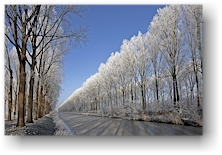 Schipdonkcanal SchipdonkcanalThis canal runs parallel with the Leopoldcanal on the territory of Damme which results into a unique panorama. It was dug in 1852 as a diverting canal from the river Leie. The nickname "de Stinker" (= the smelly canal) refers to the retting of flax that was done in the Leie. This activity was very polluting and made the water stink really badly. But that's a part of the past; now fish is again present in the canal en it is a marvellous spot for a refreshing bicycle ride. Fauna and flora is comparable to that of the Leopoldcanal [more info] |
||
|
Nature reserve "old Fortress Saint-Donaas" This reserve has been established on the remains of the old fortress of Saint-Donaas. The stronghold was contructed in the beginning of the 17th century and was largely destructed in the beginning of the 19th century when the Napoleoncanal (Damse Vaart) was dug straight through it. The bastion was surrounded by ravelines and ditches. This variation of high, dry spots and wet ditches are the foundation of a distinctive fauna and flora [more info] |
||
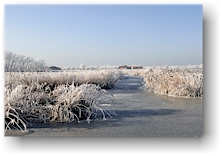 Nature
reserve "Flat Creek" Nature
reserve "Flat Creek"Floods from the 12th century created this marvellous landscape. This creek is a swampy area that survived the systematic dry-lying of the Zwin area. The Flat Creek consists of a creek with rough reeds, a mud plate and salty grasslands. The reserve boasts a large diversity of marhland and grassland vegetation, which on his turn leads to a wide variaty of typical birds. Next to the well-known geese and ducks, wading birds (such as the avocet and the small plover) can be spotted regularly on the mud plate. [more info] |
||
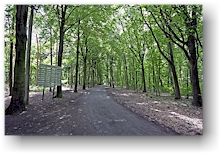 Domain Ryckevelde
and "Schobbejakshoogte" Domain Ryckevelde
and "Schobbejakshoogte"The castle of Ryckevelde lies in a beautiful woody area. This domain is not located in the polders but in the sandy area. This area is, by definition, older than the polders and the sandy soil generates a very different vegetation compared to the rest of Damme. The mainly poor sandy ground originally produced only moorish vegetation. These moors have mostly dissapeared because of the plantation of woods in the 19th century. The alteration of cultivated land, meadows, conifer forest and deciduous wood create a nice variation in the landscape [more info]
|
||
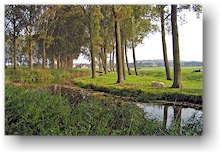 Nature
reserve
"The town ramparts of Damme" Nature
reserve
"The town ramparts of Damme"Around the historical centre of Damme lie the 17th century town walls. These ramparts have been erected in the shape of a 7-star consisting of a double moat with ravelines. When Damme was no longer used as a military bastion, the ramparts were sold publically. The exceptional composition of dry and moist grounds are the ideal biotope for a rich diversity of water wildlife. [more info] |
||
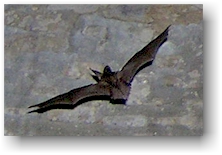 Bat
cellar
"The old ramparts of Damme" Bat
cellar
"The old ramparts of Damme"During the erection of the town walls in the 17th century, casemates were also constructed. These were closed storages for ammunition. In one of these casemates, nowadays bats have found a place of refuge. [more info] |
||
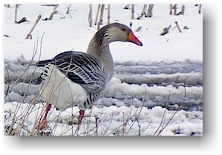 Birdlife BirdlifeThe bird migration is an annual recurring phenomenon in Damme. In the whole area but especially in the wet pastures around the centre of town, thousands of migratory birds find a baiting-place. Geese, ducks, wild swans and many other species land here, mainly around the Romboutswervedijk before continuing their journey. [more info] |
||
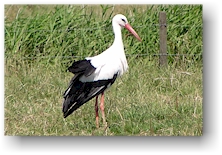 The
Zwin The
ZwinThis old nature reserve is not located in Damme, but in the neighbouring community of Knokke-Heist. In view of the historical band that Damme has with the Zwin, it's appropriate to mention. And so now and then we see a familiar guest from the Zwin in Damme: the stork. [more info] |
||
|
Other nature reserves in
the area Nature reserves in Maldegem and Knesselare: the "Maldegemveld", "Torrebos", military domain (moor reserve), canalreserve Knesselare, "Drongengoed" in Ursel, bat reserve Middelburg. Click here for more information. |
